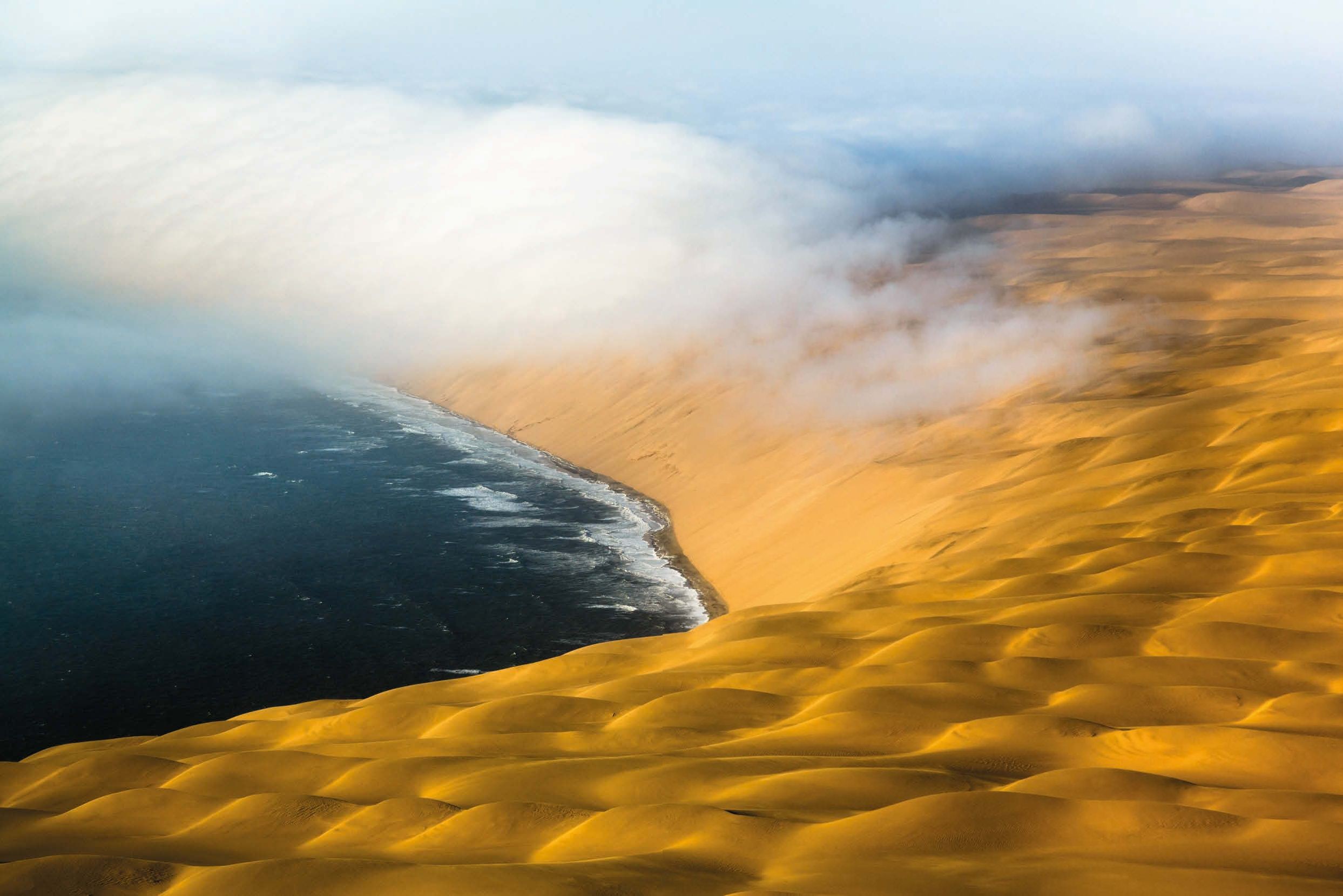
The coastal fog sits among the dunes, nourishing an array of plants and wildlife adapted to surviving in these extreme conditions
The relatively youthful face of the Namib Desert as we see it today is merely a glimpse into a period of around two million years in its very long life. It presents a portrait of extreme and exceptional beauty, but also hints at an underlying character sculpted by the harshest of conditions that carved, eroded and magmetised the country to its current splendour. With only a few minor interruptions, the Namib has been in existence for over 43 million years. Yet to understand the climatic changes that have forged this land, we need to go back a lot further.
With the breakup of Gondwana around 130 million years ago, a combination of climatic events, ocean currents, prevailing winds, erosion and volcanic powers started a stepwise process of creating what is now defined as Namibia. Driven by Antarctic currents, the cold Atlantic Ocean forged its way up the coast of this newly formed intercontinental channel. With this current came an explosive southwesterly prevailing wind. Because of erosion from southern African rivers cutting deeply into bedrock, massive amounts of sediment were delivered and deposited offshore in the southern Namib regions. These formed a vast delta and the powerful wind began the process of moving these deposits inland.
Lisez l'article complet et bien d'autres dans ce numéro de
Travel Africa
Options d'achat ci-dessous
Si le problème vous appartient,
Connexion pour lire l'article complet maintenant.
Numéro unique numérique
Sept-Nov 2020
Ce numéro et d'autres anciens numéros ne sont pas inclus dans une nouvelle version de l'article
abonnement. Les abonnements comprennent le dernier numéro régulier et les nouveaux numéros publiés pendant votre abonnement. Travel Africa
Abonnement numérique annuel
€17,99
facturé annuellement